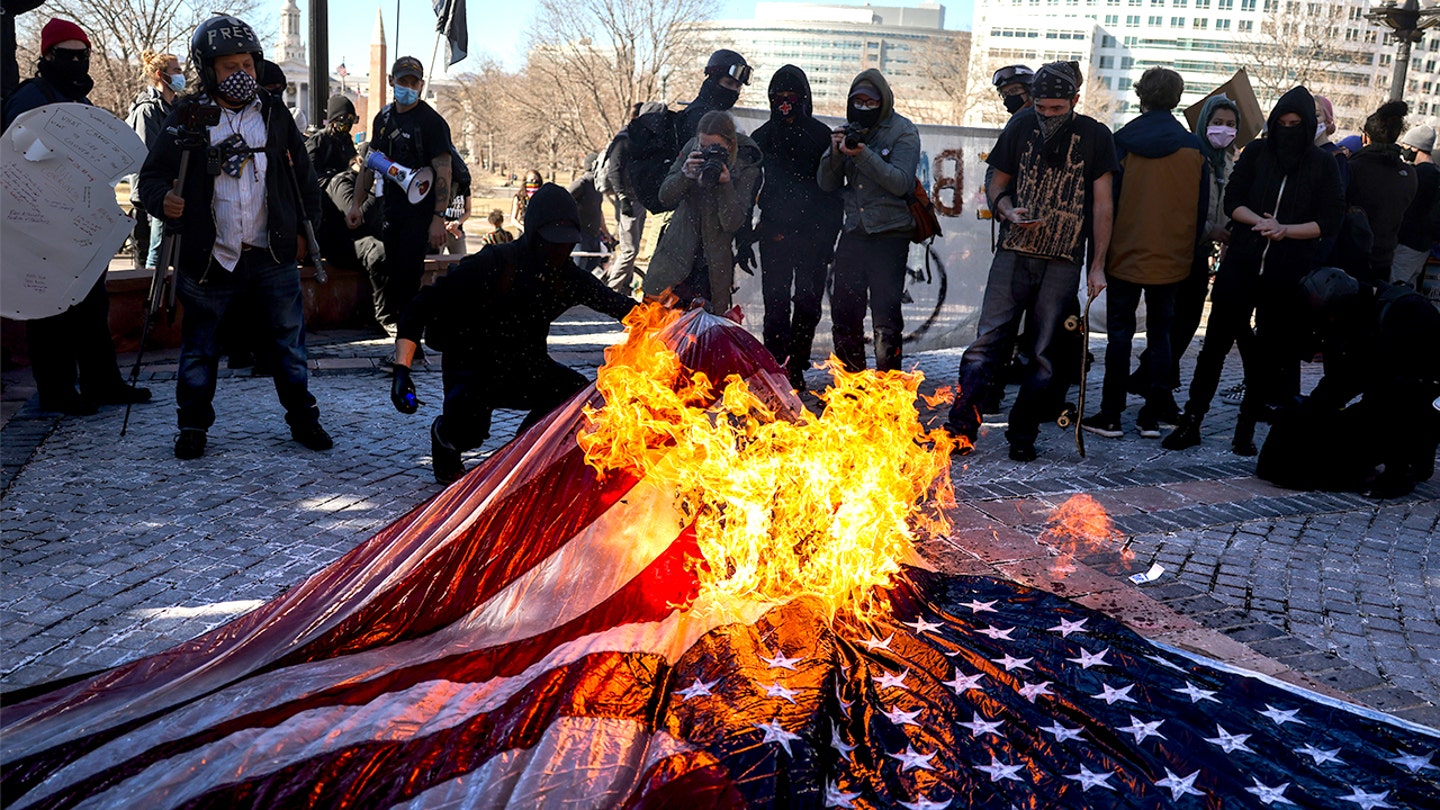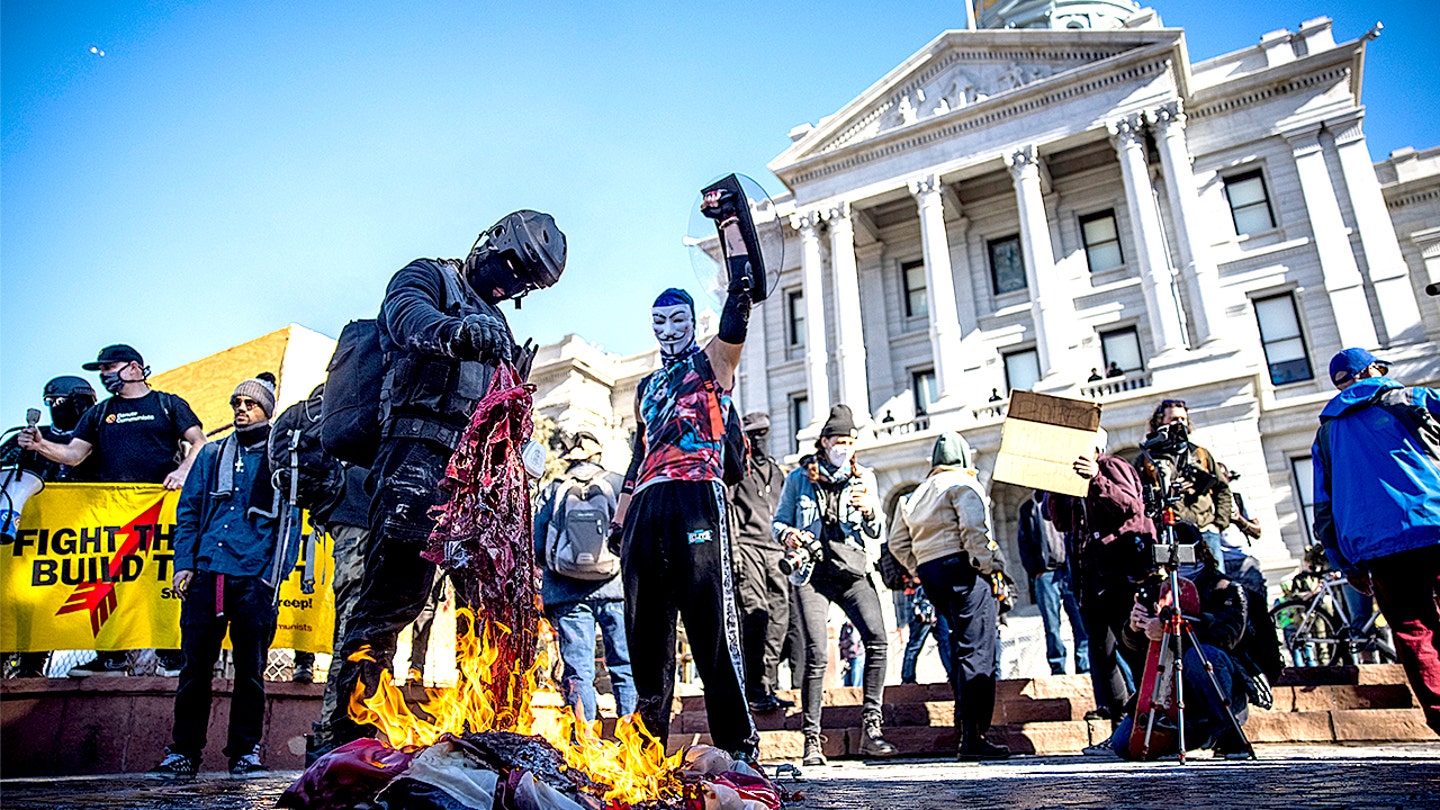Defiant Veteran Sets U.S. Flag Ablaze at White House in Fiery Protest of Trump’s Order
A veteran set off a wave of controversy in Washington when he lit the American flag on fire just steps away from the White House gates, only hours after President Donald Trump signed an executive order instructing the Justice Department to aggressively prosecute those who desecrate the national symbol. The dramatic act, carried out by 54-year-old Jay Carey, a former Army soldier with two decades of service and a Bronze Star medal, quickly escalated from a flash of protest into a nationwide debate over constitutional rights, patriotism, and presidential power.

Witnesses gathered in Lafayette Square described the moment as both shocking and symbolic, as a man who had once fought under the very flag he set ablaze stood defiantly in front of the seat of American power. Secret Service agents rushed in as flames rose, extinguishing the fire within seconds, while the U.S. Park Police detained Carey and escorted him away under charges that may appear minor on paper yet hold major political consequences.
Trump’s order, signed earlier that day in a White House ceremony, did not technically outlaw flag burning outright—a step the Supreme Court has already deemed unconstitutional in its landmark 1989 ruling in Texas v. Johnson—but it did direct federal prosecutors to use every tool available when such acts intersect with neutral laws, such as restrictions on open flames, destruction of federal property, or public safety violations. For Trump and his supporters, it was a symbolic stand in defense of what they view as the ultimate emblem of national unity. For critics, it was an unmistakable attempt to chill protected political expression by threatening protesters with legal consequences under alternative statutes.

Carey, far from denying his actions, embraced the spotlight that followed. Outside of court, he told reporters that his service gave him not just the right but the obligation to speak out against what he saw as a dangerous abuse of presidential power. “I fought for the Constitution, not for one man’s idea of loyalty,” he said, his voice steady but his eyes defiant. “If burning a piece of cloth is what it takes to remind people that free speech is still free, then so be it.”
His lawyers echoed the sentiment, framing the case as a clash between the First Amendment and executive overreach, signaling that motions to dismiss based on constitutional grounds were imminent. Prosecutors, however, avoided direct charges of flag desecration, instead filing misdemeanors tied to fire safety and public property laws—charges that now carry enormous symbolic weight.
The political reverberations have been immediate. Supporters of Trump praised the order as a necessary defense of national honor. Civil liberties groups warned that prosecuting a veteran for symbolic protest risks undermining the very freedoms the flag is supposed to represent. The American Civil Liberties Union reminded the public that the Supreme Court has repeatedly upheld flag burning as constitutionally protected speech.
As Carey awaits trial, the case has evolved into a referendum on executive authority, free speech, and the meaning of patriotism itself. Whether seen as an act of betrayal or ultimate loyalty, his protest has reignited one of America’s most enduring debates—what the flag stands for, and who gets to decide.

